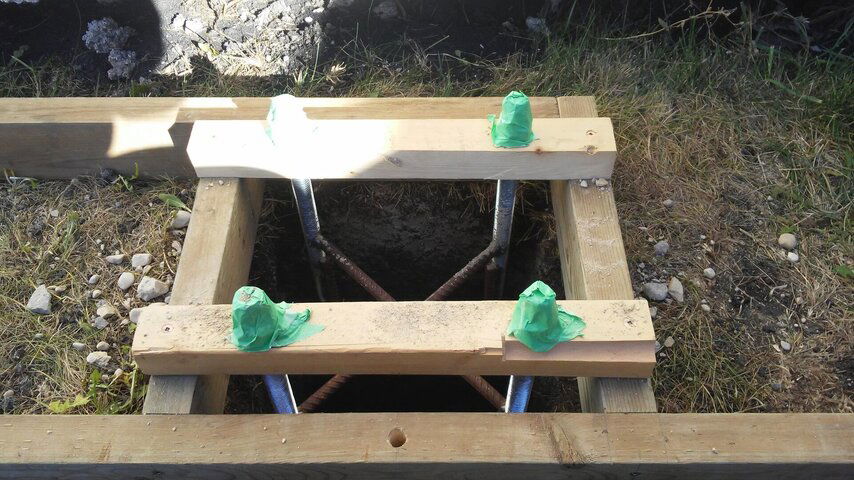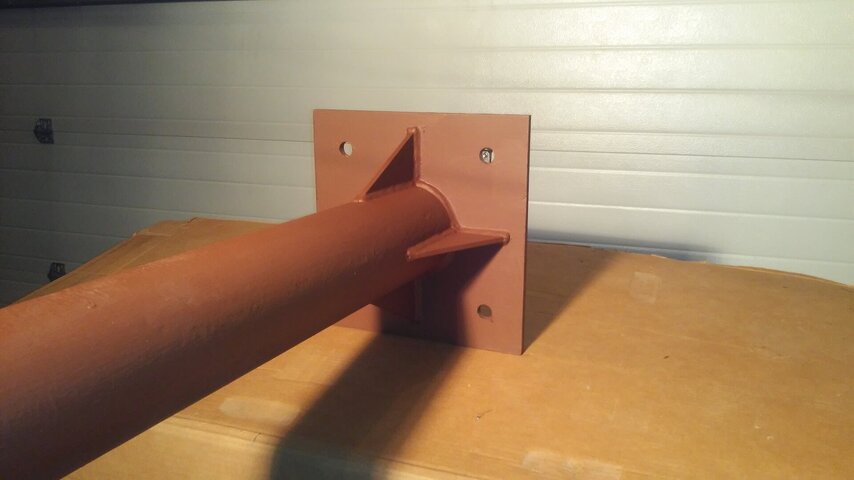I am adding a another 10 foot dish to the farm so I thought I would take a few pictures of the installation. Hopefully this will be of some help to those installing a dish for the first time.
When I first started installing dishes many years ago, I simply dug a hole, stuck in the pipe and poured in some concrete like all the other dealers.
Then a customer in the sign business, showed me a much better way. I began using a base plate and threaded rod method. I feel this method has many advantages over pipe in concrete.
1) You get more concrete in the hole.
2) You can adjust the plumb at any time
3) There is no concern about keeping a pipe plumb while you pour the cement and wait for it to cure.
4) It is much easier to work with a 5 foot pipe that an 11 foot pipe.
5) The pipe can be easily removed.
I live in a very cold climate here in Canada where the frost can reach 6 feet in extreme winters. The threaded rod/rebar cage I built was 7 feet long from tip to tip. The hole was also approximately 7 feet and 12 inches square. I used 3/4 threaded rod and have never had a problem. I don't remember the rebar size, but it is not that critical anyway.
I always weld the rebar to the threaded rod with the rods firmly bolted to the plate. Simply put, build your threaded rod/rebar cage around your base plate. Not the other way around. You will notice that I weld 2 cross braces to the threaded rod, which will help keep the rods aligned to the holes in the base plate. It is very easy to bend the threaded rod/rebar cage in transportation and the pouring of the concrete. I skipped this step on my first one and paid for it by having a plate that wouldn't fit on the rods that were already cemented in.
NEXT UP: Pouring the concrete.
When I first started installing dishes many years ago, I simply dug a hole, stuck in the pipe and poured in some concrete like all the other dealers.
Then a customer in the sign business, showed me a much better way. I began using a base plate and threaded rod method. I feel this method has many advantages over pipe in concrete.
1) You get more concrete in the hole.
2) You can adjust the plumb at any time
3) There is no concern about keeping a pipe plumb while you pour the cement and wait for it to cure.
4) It is much easier to work with a 5 foot pipe that an 11 foot pipe.
5) The pipe can be easily removed.
I live in a very cold climate here in Canada where the frost can reach 6 feet in extreme winters. The threaded rod/rebar cage I built was 7 feet long from tip to tip. The hole was also approximately 7 feet and 12 inches square. I used 3/4 threaded rod and have never had a problem. I don't remember the rebar size, but it is not that critical anyway.
I always weld the rebar to the threaded rod with the rods firmly bolted to the plate. Simply put, build your threaded rod/rebar cage around your base plate. Not the other way around. You will notice that I weld 2 cross braces to the threaded rod, which will help keep the rods aligned to the holes in the base plate. It is very easy to bend the threaded rod/rebar cage in transportation and the pouring of the concrete. I skipped this step on my first one and paid for it by having a plate that wouldn't fit on the rods that were already cemented in.
NEXT UP: Pouring the concrete.







